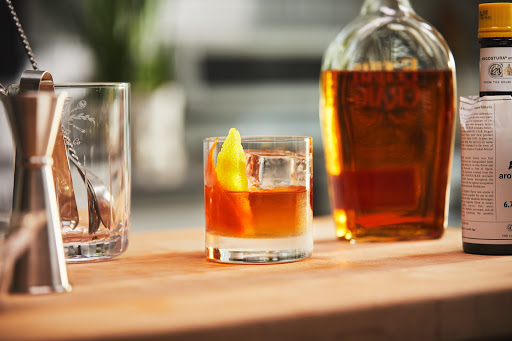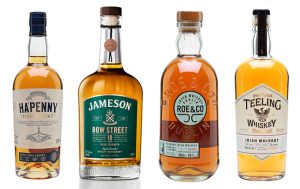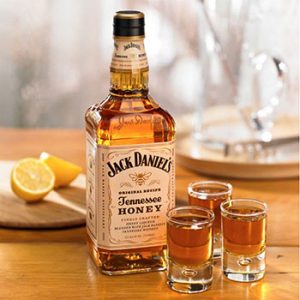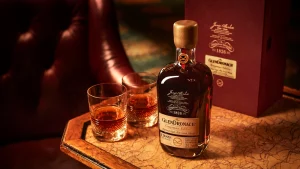Whether you prefer it neat, on the rocks, or in a cocktail, it’s time to uncover the best whiskey in the world. Join us on a journey to discover the world’s most sought-after whiskies, handpicked based on the preferences of today’s discerning drinkers.
The best whiskey in the world is a matter of personal taste and preference. From the peaty smokiness of Scotch whiskies to the smooth and subtle flavors of Japanese whiskies and the robust and spicy notes of American bourbons, there is a whiskey for every palate.
Whether you’re a seasoned connoisseur or just starting your journey, taking the time to explore the world of whiskey is a true delight.
What are the best whiskeys in the world?
Whiskey enthusiasts are constantly searching for the best in the world, and the answer to this question is subjective and varies based on personal taste. However, some of the most commonly recognized top-performing whiskies include:
- Macallan – A highly sought-after Scotch whisky known for its rich, full-bodied flavor and elegance.
- Glenlivet – Another legendary Scotch whisky prized for its smooth, fruity, and floral notes.
- Yamazaki – A Japanese whisky with a unique flavor profile, showcasing notes of honey, fruit, and spices.
- Hibiki – A multi-award-winning Japanese whisky with a harmonious blend of fruit, floral, and spice flavors.
- Pappy Van Winkle – An ultra-rare and highly sought-after American bourbon known for its smooth and complex flavor profile.
- Buffalo Trace – A popular American bourbon offering a balanced blend of vanilla, oak, and caramel flavors.
These are just a few examples of the many incredible whiskies available worldwide. The best one for you will depend on your personal taste and preferences. So, go ahead, sample, and discover the whiskey that best suits you.
How to determine the best whiskey in the world
Determining the best whiskey in the world is a matter of personal preference and subjective judgment, and there is no one right answer. Here are some factors that are commonly considered when evaluating whiskies:
- Age: An older whiskey is generally considered more refined and sophisticated, with a deeper and more complex flavor profile.
- Distillation and aging process: The type of still used, the length of time the whiskey is aged, and the type of barrel used all play a role in the final flavor of the whiskey.
- Quality of ingredients: The quality of the grain, water, and yeast used in the production process can greatly affect the flavor and quality of the whiskey.
- Taste: A whiskey’s flavor profile is an important factor in determining its quality. Notes of fruit, spice, wood, and smoke are often evaluated.
- Price: Expensive does not always equate to better, but a high price can indicate a rare or high-quality whiskey.
Ultimately, the best whiskey is the one that you enjoy the most. Taste and experiment with different varieties to discover what you like best. It’s all about personal preference, so don’t be afraid to try something new and find your perfect whiskey.
The factors that contribute to a whiskey being considered the best
The factors that contribute to a whiskey being considered the best can vary, but the following are commonly considered:
- Quality of ingredients: The quality of the grains, water, and yeast used in the production process plays a significant role in the final flavor and quality of the whiskey.
- Distillation and aging process: The method of distillation, the length of time the whiskey is aged, and the type of barrel used can all impact the final flavor profile.
- Taste: A whiskey’s flavor profile is a key factor in determining its quality, with experts evaluating its taste for notes of fruit, spice, wood, and smoke.
- Balance: A well-balanced whiskey is one that has harmonious flavors and a smooth mouthfeel, without any one flavor overpowering the others.
- Consistency: Consistency in flavor and quality is important in determining the best whiskies, as variations in taste between batches can indicate a lack of control in the production process.
- Reputation: A whiskey with a strong reputation and a history of awards and accolades can be an indicator of its quality.
- Price: While a high price does not always equate to the best quality, it can be an indicator of a rare or highly sought-after whiskey.
These are some of the key factors considered when evaluating whiskies and determining the best in the world. However, the final decision is always a matter of personal taste and preference.
The top-rated and most popular whiskeys in the world
The top-rated and most popular whiskeys in the world vary depending on personal taste and regional preferences. However, some of the most highly rated and widely sought-after whiskies include:
- Macallan – A highly regarded Scotch whisky known for its rich, full-bodied flavor and elegance.
- Glenlivet – A legendary Scotch whisky prized for its smooth, fruity, and floral notes.
- Yamazaki – A Japanese whisky with a unique flavor profile, showcasing notes of honey, fruit, and spices.
- Hibiki – A multi-award-winning Japanese whisky with a harmonious blend of fruit, floral, and spice flavors.
- Pappy Van Winkle – An ultra-rare and highly sought-after American bourbon known for its smooth and complex flavor profile.
- Buffalo Trace – A popular American bourbon offering a balanced blend of vanilla, oak, and caramel flavors.
These whiskies are widely recognized as some of the best in the world, but the ultimate decision is always a matter of personal taste and preference. So, be sure to try and discover what you like best.
The differences between single malt and blended whiskey
Single malt and blended whiskey are two distinct types of whiskey with different production processes and flavor profiles.
Single malt whiskey is made from 100% malted barley, distilled in pot stills, and aged in oak barrels. It is produced by a single distillery, and the flavor profile is a result of the specific barley, water, yeast, and barrel used in the production process. Single malt whiskey is often considered the purest expression of a distillery’s style and character.
Also, blended whiskey, on the other hand, is a combination of different single malt whiskies, along with grain whiskey (made from a blend of different grains, including corn, wheat, and barley).
The purpose of blending is to create a consistent and balanced flavor profile, with each component contributing a unique set of flavors to the final product. Blended whiskey is often less expensive and more widely available than single-malt whiskey.
Furthermore, single malt whiskey is a pure expression of the production process of a single distillery, while blended whiskey is a combination of different whiskies crafted to achieve a consistent and balanced flavor profile.
The role of age in determining the best whiskey
Aging whiskey involves allowing it to sit in barrels and casks, allowing it to slowly extract flavors and aromas from the wood. This process of maturation allows the whiskey to develop a complex flavor profile with notes of wood, smoke, and other tasting notes. Aging also helps mellow the whiskey, resulting in a smoother, less harsh taste.
Also, the length of aging is an important factor in determining the quality of the whiskey. The longer it is aged, the more flavorful and complex it will become, but the longer it is aged, the more expensive the whiskey will be. Generally, the best whiskey is aged for at least eight years, though there are some whiskeys that are aged for 12-15 years or even longer.
In addition, the type of barrel used for aging is also important. Different types of barrels will impart different flavors and aromas to the whiskey. American whiskey is typically aged in charred oak barrels, which imparts a smoky, caramel-like flavor. Other types of barrels, such as sherry and port barrels, can add a sweeter flavor to the whiskey.
The impact of region and climate on the quality of the whiskey
Region and climate can have a significant impact on the quality of the whiskey. The climate of a region can affect the maturation process, which can result in a different flavor profile. Different regions have different soil and water resources, which can also influence the flavor of the whiskey.
Temperature, humidity, and air pressure can also influence the production process, as well as the flavor of the final product. Warmer climates can cause an increase in the rate of maturation, resulting in a spirit that is less complex, while colder climates can slow down the maturation process and result in a more complex spirit.
In addition, the type of cask used to age whiskey can also influence the flavor, as different types of wood can impart different flavors and aromas.
The use of different types of barrels in aging whiskey
The two most common types of barrels used in aging whiskey are American oak barrels and European oak barrels.
American oak barrels are the barrels most commonly used for aging whiskey in the United States, as the porous nature of the wood leads to the whiskey quickly absorbing the flavors of the wood, resulting in a smooth, mellow flavor.
European oak barrels, on the other hand, are typically more expensive and are usually used to age more expensive whiskeys. These barrels also impart a unique flavor to the whiskey but tend to be more intense and spicy than American oak barrels.
How to taste and evaluate whiskey
Whiskey tasting and evaluation is a fascinating and rewarding hobby that can be enjoyed by both connoisseurs and casual drinkers alike. By learning to properly taste and evaluate whiskey, you can gain a greater appreciation for the wide variety of flavors and aromas that can be found in different whiskeys.
Here below, you have the method on how you can taste and evaluate the quality of the whiskey:
- Look at the whiskey – Observe the whiskey’s color, clarity, and legs.
- Smell the whiskey – Take a sniff and determine the aroma.
- Take a sip – Take a small sip of whiskey and swish it around in your mouth to coat your tongue, allowing the aromas to hit your olfactory senses.
- Swallow or spit – You can either swallow or spit the whiskey, whichever you prefer.
- Examine the whiskey – Note the flavor, body, and finish, as well as any nuances or complexities.
- Evaluate the whiskey – Rate the whiskey on a scale from one to five, with five being the highest.
The impact of cultural differences on the perception of the best whiskey
The impact of cultural differences on the perception of the best whiskey is highly significant. Different countries and cultures around the world have different preferences when it comes to whiskey.
For example, in Scotland, the traditional preference is for single-malt whisky. Single malt whisky is made from the same type of grain (usually barley) and is usually matured in oak barrels. It has a rich, smoky flavor and is often enjoyed neat or with a drop of water.
In contrast, in the United States, the preference is for blended whiskies. Blended whiskies are made by combining different types of whiskey, such as bourbon and rye, to create a unique flavor profile. Blended whiskies tend to be smoother and less smoky than single malt whiskies, which makes them more approachable for many American whiskey drinkers.
In Japan, whiskey drinkers tend to prefer single-malt whiskies. Japanese single malt whiskies have a unique flavor profile due to the unique production methods used in Japan. Japanese whisky is often aged in barrels made from Japanese oak, which imparts a unique flavor to the whisky. Japanese single malt whiskies tend to be lighter, fruitier, and smoother than their Scottish and American counterparts.
How to pair the best whiskey with food
Pairing whiskey with food can enhance the flavor and enjoyment of both the drink and the meal. Here are some tips for pairing whiskey with food:
- Consider the flavor profile of the whiskey: The first step in pairing whiskey with food is to consider the flavor profile of the whiskey. For example, a rich and peaty Scotch whisky would pair well with bold and hearty flavors, such as grilled meats and strong cheeses. On the other hand, a lighter and fruitier whiskey, such as bourbon, would pair well with lighter fare, such as grilled fish or roasted chicken.
- Match the intensity of the flavors: Pairing whiskey with food should involve matching the intensity of the flavors. For example, a bold and full-bodied whiskey should be paired with equally bold flavors, while a lighter whiskey should be paired with lighter, subtler flavors.
- Consider the sweetness of the whiskey: The sweetness of the whiskey should also be taken into consideration when pairing it with food. For example, a sweeter whiskey, such as bourbon, would pair well with desserts or fruit-based dishes, while a drier whiskey, such as Scotch, would pair well with savory dishes.
- Experiment: Don’t be afraid to experiment with different whiskey and food combinations to discover what you like best. Sometimes, surprising and unexpected pairings can result in a truly delightful experience.
- Serve the whiskey at the right temperature: Serving whiskey at the right temperature can also enhance its flavor and aroma. Generally, whiskey should be served at room temperature or slightly warm.
By considering these factors, you can pair whiskey with food to create a truly enjoyable and satisfying experience.
Can whiskey make one drunk?
Yes, whiskey, like any alcoholic beverage, can make one drunk. Drinking too much whiskey or drinking it too quickly can cause impairment of mental and physical functions, which is commonly referred to as being “drunk.”
The speed and degree of being drunk depend on several factors, such as body weight, tolerance, and the amount consumed. It’s important to drink responsibly and in moderation and never to drink and drive.
Recommended:
- What alcohol gets you drunk the fastest?
- Why don’t I get drunk when I drink alcohol?
- Different alcohol shots
- How much is a Hennessy bottle?
What is the drinking limit for whiskey?
The drinking limit for whiskey, or any alcoholic beverage, is determined by several factors, including an individual’s weight, tolerance, and overall health. It’s important to note that alcohol affects each person differently, and there is no specific amount that is safe for everyone.
However, as a general guideline, the Centers for Disease Control and Prevention (CDC) recommends that men should not exceed two standard drinks per day and women should not exceed one standard drink per day. A standard drink is defined as 14 grams of pure alcohol, which is equivalent to 1.5 ounces of 80-proof whiskey.
It’s important to remember that consuming more than the recommended limit can increase the risk of alcohol-related problems, such as impaired judgment, decreased coordination, and an increased risk of liver disease, among others. It’s also important to drink responsibly and in moderation and never to drink and drive.
Conclusion
If you want to know the best whiskey in the world, then you are just in the right place. The best whiskey in the world is a matter of personal preference, and there is no single correct answer. Different people may prefer different types of whiskey based on their individual tastes. Ultimately, it comes down to finding the whiskey that best suits your palate.




